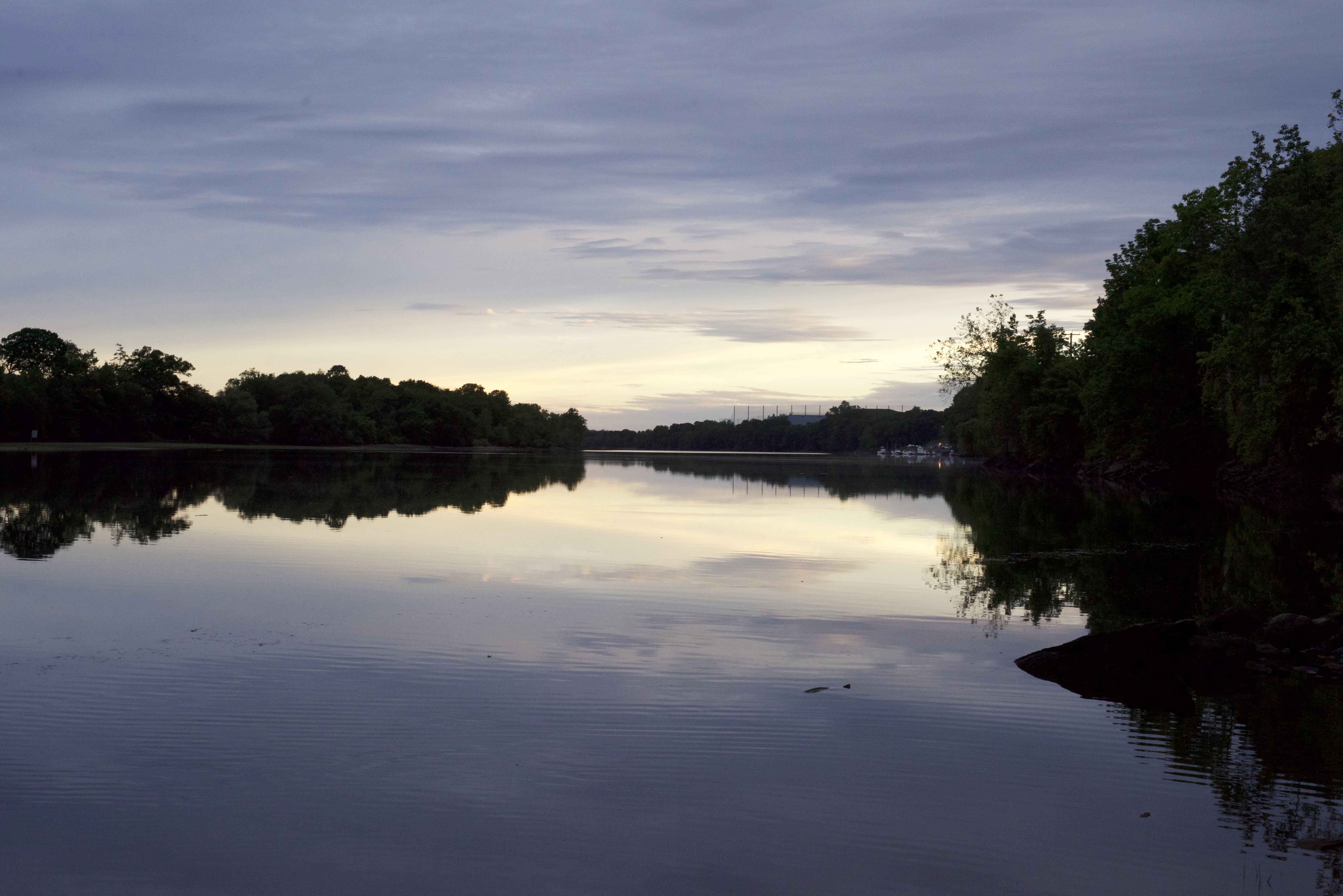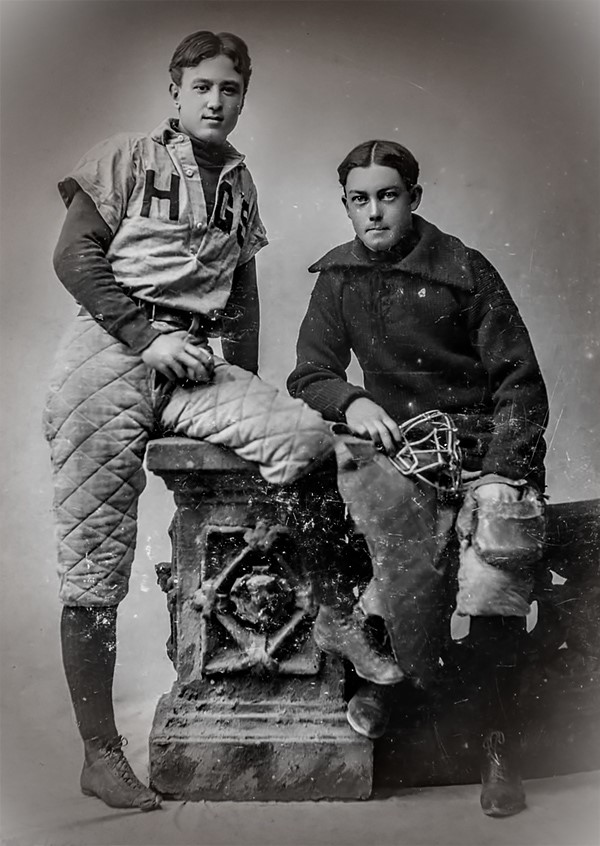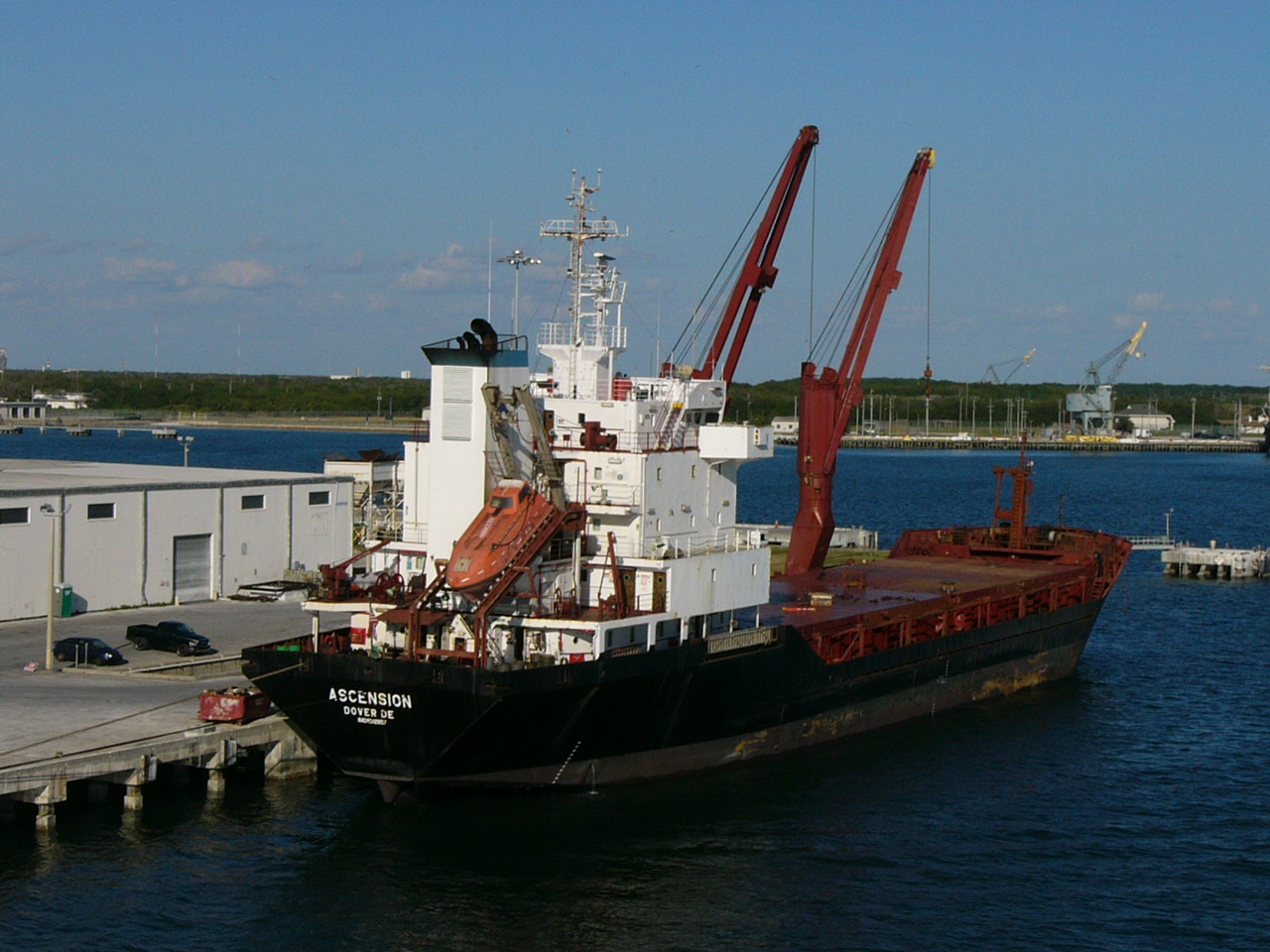|
West Cornwall Covered Bridge
The West Cornwall Covered Bridge (an earlier incarnation was known as the Hart Bridge) is a wooden covered lattice truss bridge carrying the Sharon-Goshen Turnpike over the Housatonic River in the town of Cornwall, Connecticut. Records indicate that a bridge may have been in place in this location as early as 1762. A previous bridge was destroyed in the flood of 1837 and a new bridge was constructed in 1841. This bridge would also be destroyed and the current bridge would be completed circa 1864. Utilizing the central pier from the previous incarnation, despite the Town lattice being able to withstand the weight and single span, the bridge has two spans. The later addition of queen trusses and supports gives the bridge an unusual appearance. Modernization of the bridge in 1968 and 1973 has continued to let the bridge handle traffic. It was added to the National Register of Historic Places in 1975. History Located at the north-south and east-west roadway section of the rivers ... [...More Info...] [...Related Items...] OR: [Wikipedia] [Google] [Baidu] |
Housatonic River
The Housatonic River ( ) is a river, approximately long,U.S. Geological Survey. National Hydrography Dataset high-resolution flowline dataThe National Map , accessed April 1, 2011 in western Massachusetts and western Connecticut in the United States. It flows south to southeast, and drains about of southwestern Connecticut into Long Island Sound. History Indigenous history Indigenous people began using the river area for fishing and hunting at least 6,000 years ago. By 1600, the inhabitants were mostly Mohicans and may have numbered 30,000. The river's name is derived from the Mohican phrase ''"usi-a-di-en-uk"'', translated as "beyond the mountain place" or "river of the mountain place".Housatonic Valley Association. Cornwall Bridge, CT"History of the Housatonic Valley." Accessed 2015-10-1. It is referred to in the deed by which a group of twelve colonists called "The Proprietors" captured the land now called Sherman, Connecticut, Sherman and New Fairfield as "Ousetonack". S ... [...More Info...] [...Related Items...] OR: [Wikipedia] [Google] [Baidu] |
WFSB
WFSB (channel 3) is a television station licensed to Hartford, Connecticut, United States, serving the Hartford–New Haven market as an affiliate of CBS. Owned by Gray Media, the station maintains studios on Denise D'Ascenzo Way in Rocky Hill and a transmitter on Talcott Mountain in Avon, Connecticut. Most of WFSB's programs are seen in Springfield, Massachusetts, over a low-power semi-satellite station, WSHM-LD (channel 33). That station is based at the facilities of sister station WGGB-TV (channel 40) in Springfield, although some master control and other internal operations are hubbed through WFSB. WFSB also maintains a second sister station, WWAX-LD (channel 27), also licensed to Hartford. Known on-air as ''theWax'', WWAX-LD mainly features simulcasts and repeats of WFSB's news programming, along with second runs of its syndicated shows and other Gray-produced programming. Its own third subchannel features a full-time automated feed of WFSB news briefs, headlin ... [...More Info...] [...Related Items...] OR: [Wikipedia] [Google] [Baidu] |
Valley Of The Dolls (film)
''Valley of the Dolls'' is a 1967 American Drama (film and television), drama film directed by Mark Robson (film director), Mark Robson and produced by David Weisbart, based on Jacqueline Susann's Valley of the Dolls (novel), 1966 novel. The film stars Barbara Parkins, Patty Duke, and Sharon Tate as three young women who become friends as they struggle to forge careers in the entertainment industry. As their careers take different paths, all three descend into barbiturate addiction. Susan Hayward, Paul Burke (actor), Paul Burke, and Lee Grant co-star. ''Valley of the Dolls'' was released by 20th Century Studios, 20th Century Fox on December 15, 1967. The film was panned by critics, but became a box office success and one of the studio's highest grossing films. In the decades since its release, it has attracted a passionate cult following. Plot Recent Radcliffe College, Radcliffe graduate Anne Welles is hired as a secretary at a theatrical agency which represents Helen Lawson, a ... [...More Info...] [...Related Items...] OR: [Wikipedia] [Google] [Baidu] |
Three Places In New England
The ''Three Places in New England (Orchestral Set No. 1)'' is a composition for orchestra in three movements by United States, American composer Charles Ives. It was written mainly between 1911 and 1914, but with sketches dating as far back as 1903 and last revisions made in 1929. The work is celebrated for its use of musical quotation and paraphrasing. The Movement (music), movements (in Ives's preferred slow-fast-slow sequence, longest first and shortest last) are: Lasting just under twenty minutes, ''Three Places in New England'' has become one of Ives's most performed compositions. It exhibits signature traits of his style: layered texture (music), textures with multiple, sometimes simultaneous melodies, many of which are recognizable hymn or marching tunes; Sound mass, masses of sound, including tone clusters; and sudden, sharp textural contrasts. Each "place" is in New England. Each is intended to make the listener experience a unique atmosphere, as if there. To this end, th ... [...More Info...] [...Related Items...] OR: [Wikipedia] [Google] [Baidu] |
Berkshires
The Berkshires () are highlands located in western Massachusetts and northwestern Connecticut in the United States. Generally, "Berkshires" may refer to the range of hills in Massachusetts that lie between the Housatonic and Connecticut Rivers. Highlands of northwest Connecticut may be seen as part of the Berkshires and sometimes called the Northwest Hills or Litchfield Hills. The segment of the Taconic Mountains in Massachusetts is often considered a part of the Berkshires, although they are geologically separate and are a comparatively narrow range along New York's eastern border. Also referred to as the Berkshire Highlands, Berkshire Hills, Berkshire Mountains, and Berkshire Plateau, the region enjoys a vibrant tourism industry based on music, arts, and recreation. Geologically, the mountains are a subrange of the Appalachian Mountains. The Berkshires were named among the 12 Last Great Places by The Nature Conservancy. Definition The term "The Berkshires" has overlappi ... [...More Info...] [...Related Items...] OR: [Wikipedia] [Google] [Baidu] |
Charles Ives
Charles Edward Ives (; October 20, 1874May 19, 1954) was an American modernist composer, actuary and businessman. Ives was among the earliest renowned American composers to achieve recognition on a global scale. His music was largely ignored during his early career, and many of his works went unperformed for many years. Later in life, the quality of his music was publicly recognized through the efforts of contemporaries like Henry Cowell and Lou Harrison, and he came to be regarded as an "American original". He was also among the first composers to engage in a systematic program of experimental music, with musical techniques including polytonality, polyrhythm, tone clusters, aleatory elements, and quarter tones. His experimentation foreshadowed many musical innovations that were later more widely adopted during the 20th century. Hence, he is often regarded as the leading American composer of art music of the 20th century. Sources of Ives's tonal imagery included hymn ... [...More Info...] [...Related Items...] OR: [Wikipedia] [Google] [Baidu] |
Bull's Bridge
Bull's Bridge is a single-lane vehicular wooden covered bridge across the Housatonic River in the town of Kent, Connecticut, close to the state border with New York. The first instance of a bridge at this location was constructed by Jacob and Isaac Bull in 1760, which gave the bridge its name. Popular legend suggests that George Washington crossed the bridge with the Bulls' assistance while still under construction. The current bridge was built in 1842 from timber, with additional supports added in the 19th and 20th centuries. Built with a Town lattice design, the bridge has reinforced trusswork visible on the interior. At the time of its nomination to the National Register of Historic Places the roof had wood shingles. It is historically significant as one of three surviving covered bridges in Connecticut, and was listed on the National Register of Historic Places in 1972. Location The bridge is long and crosses the Housatonic River in the northwest corner of the state, ha ... [...More Info...] [...Related Items...] OR: [Wikipedia] [Google] [Baidu] |
Comstock's Bridge
Comstock's Bridge, also known as the Comstock Covered Bridge, is a covered bridge in Connecticut, connecting the town of East Hampton to the town of Colchester, spanning the Salmon River. First built in 1840, but entirely replaced in 1873, it is one of only three historical covered bridges in the state. It is open to pedestrian traffic in a small park off Comstock Bridge Road. The bridge was listed on the National Register of Historic Places on January 1, 1976. Description and history Comstock's Bridge is located in southeastern East Hampton, near the junction of Comstock Bridge Road and Colchester Avenue ( Connecticut Route 16). The bridge consists of two spans: its main span is a Howe truss, long, with a roadbed wide. That span is covered by a gabled roof and sheathed in vertical board siding. Gates at either end of the bridge limit access to pedestrians. A secondary span, in length, connects the bridge to the eastern shore. This span is uncovered; its trusses ar ... [...More Info...] [...Related Items...] OR: [Wikipedia] [Google] [Baidu] |
Substructure (engineering)
The substructure of a building transfers the load of the building to the ground and isolates it horizontally from the ground. This includes foundations and basement retaining walls.Designing Buildings https://www.designingbuildings.co.uk/wiki/Substructure It is differentiated from the superstructure. It safeguards the building against the forces of wind, uplift, soil pressure etc. It provides a level and firm surface for the construction of superstructure A superstructure is an upward extension of an existing structure above a baseline. This term is applied to various kinds of physical structures such as buildings, bridges, or ships. Aboard ships and large boats On water craft, the superstruct .... It also prevents unequal or differential settlement and ensures stability of the building against sliding, overturning, undermine due to floodwater or burrowing animals. References Building engineering {{Engineering-stub ... [...More Info...] [...Related Items...] OR: [Wikipedia] [Google] [Baidu] |
Superstructure
A superstructure is an upward extension of an existing structure above a baseline. This term is applied to various kinds of physical structures such as buildings, bridges, or ships. Aboard ships and large boats On water craft, the superstructure consists of the parts of the ship or a boat, including sailboats, fishing boats, passenger ships, and submarines, that project above her main deck. This does not usually include its Mast (sailing), masts or any armament gun turret, turrets. Note that, in modern times, turrets do not always carry naval artillery. They can also carry missile launchers and/or antisubmarine warfare weapons. The size of a watercraft's superstructure can have many implications in the performance of ships and boats, since these structures can alter their structural rigidity, their displacements, and/or stability. These can be detrimental to any vessel's performance if they are taken into consideration incorrectly. The height and the weight of superstructure ... [...More Info...] [...Related Items...] OR: [Wikipedia] [Google] [Baidu] |
I-beam
An I-beam is any of various structural members with an - (serif capital letter 'I') or H-shaped cross section (geometry), cross-section. Technical terms for similar items include H-beam, I-profile, universal column (UC), w-beam (for "wide flange"), universal beam (UB), rolled steel joist (RSJ), or double-T (especially in Polish language, Polish, Bulgarian language, Bulgarian, Spanish language, Spanish, Italian language, Italian, and German language, German). I-beams are typically made of structural steel and serve a wide variety of construction uses. The horizontal elements of the are called flanges, and the vertical element is known as the "web". The web resists shear forces, while the flanges resist most of the bending moment experienced by the beam. The Euler–Bernoulli beam equation shows that the -shaped section is a very efficient form for carrying both bending and shearing (physics), shear loads in the plane of the web. On the other hand, the cross-section has a reduced ... [...More Info...] [...Related Items...] OR: [Wikipedia] [Google] [Baidu] |






